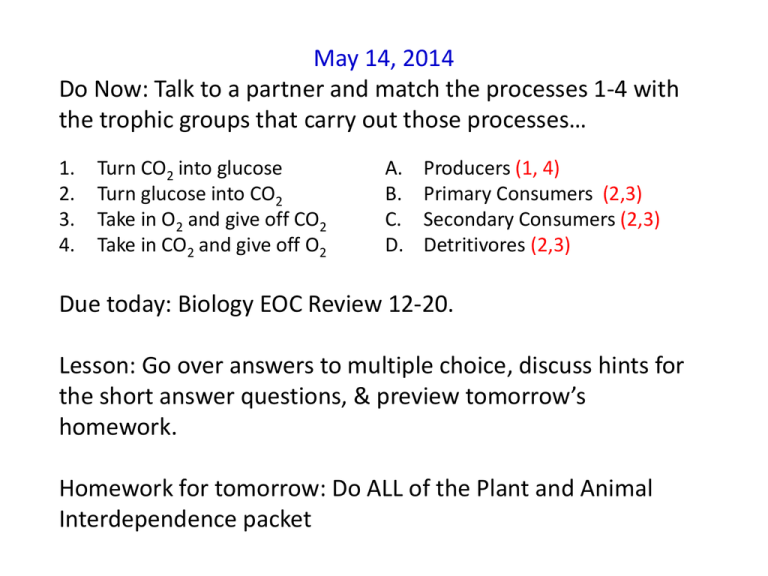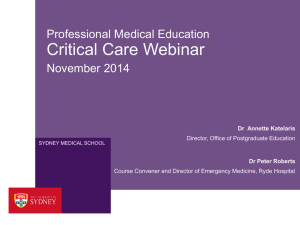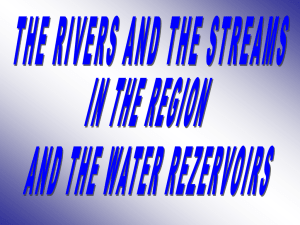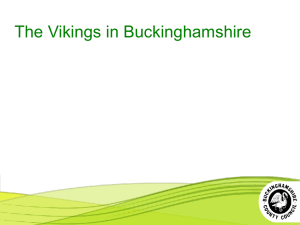EOC Review 1-part 2
advertisement

May 14, 2014 Do Now: Talk to a partner and match the processes 1-4 with the trophic groups that carry out those processes… 1. 2. 3. 4. Turn CO2 into glucose Turn glucose into CO2 Take in O2 and give off CO2 Take in CO2 and give off O2 A. B. C. D. Producers (1, 4) Primary Consumers (2,3) Secondary Consumers (2,3) Detritivores (2,3) Due today: Biology EOC Review 12-20. Lesson: Go over answers to multiple choice, discuss hints for the short answer questions, & preview tomorrow’s homework. Homework for tomorrow: Do ALL of the Plant and Animal Interdependence packet The diagram below shows some of the organisms that would be in a forest ecosystem. Tussock moths are native to the forest ecosystem. In the fall, tussock moths lay eggs on Douglas fir trees. In the spring, tussock moth larvae eat the needles of the Douglas fir trees. 12. Students used a greenhouse as a model of a forest ecosystem to predict the effects of air temperature changes on tussock moths in a forest. Describe two ways the greenhouse model may lead to unreliable predictions about the effects of air temperature changes on a moth population in a forest ecosystem. In your description, be sure to: • Describe two differences that make a forest ecosystem more complex than the greenhouse. • Describe how each of the differences could cause the students’ predictions about a moth population in a forest ecosystem to be unreliable. One way: The weather in the greenhouse is stable with no rain or snow. Weather conditions such as snow could kill larvae or tree branches and affect population growth. 1 pt Another way: Other animals such as birds and frogs are not in a greenhouse. The absence of predators can increase the population of moths and make observations unreliable. 1 pt Along a Stream Paige and Logan did a field study to learn about the distribution of plants near a stream. They found the high flow line (the highest level stream water reaches) to be 4 meters from the stream. Paige and Logan counted the number of plants at, below, and above the high flow line of the stream. Field Study Question: how does distance from the stream affect the number of plants growing there? High flow line plant stream 1 meter square sample area Procedure: 1. Go to the field study location when the stream is low. Record the location, data and time. 2. Select a 1-meter square sample area two meters from the stream. 3. Count the number of plants within the sample area. Record as Trial 1 for two meters. 4. Repeat steps 2 and 3 in three different locations as Trials 2 through 4. 5. Repeat steps 2 through 4 at distances of four and six meters from the stream. 6. Calculate and record the average number of plants at each distance from the stream. How does this procedure illustrate the following criteria? • Logical steps to do the field study • • Conditions to be compared (at least 3 conditions!) • Data to be collected • • Method for collecting data How often (how many times) the data should be collected and recorded Environmental conditions to be recorded 13. What did Paige and Logan do to make the results of the field study valid? A. Choose a stream behind the school B. Collected field study data for four trials Reliability (more trials) C. Conducted the field study during the afternoon Validity (more levels of controlled variable) 14. The high flow line can move if the amount of water in a stream changes. Based on Paige and Logan’s results, what would happen to the plants if the high flow line moved farther from the stream? D. Collected data at three distances from the stream A. The number of plants four meters from the stream would decrease B. The mass of the plants two meters from the stream would increase C. The height of the plants six meters from the stream would decrease D. The reproduction rate of plants four meters from the stream would increase 15. Paige and Logan counted a total of 480 plants in 12 square meters. What was the population density of these plants? A. 40 plants per square meter 480 plants/12 square meters = 40 B. 480 plants per square meter C. 492 plants per square meter D. 5,760 plants per square meter 16. How would a fish population affect the stream ecosystem? A. Fish would lower the water temperature B. Fish would produce oxygen from the water C. Fish would block sunlight, increasing plant growth. D. Fish would produce waste, providing nutrients to plants. 17. A year after their field study, Paige and Logan collected new data and found an average of only 5 plants per square meter at locations two meters from the stream. Which could explain why the number of plants two meters from the stream decreased? A. The new data were collected later in the day. B. The topsoil had been washed away by a flood. C. A larger sample area was used to count plants. D. The animals that ate the plants had moved away. Number of Plants (per 1 meter square) Distance from the stream (m) Trial 1 Trial 2 Trial 3 Trial 4 Average 2 16 18 19 20 18 4 (high flow line) 47 49 50 45 48 6 55 53 52 56 54 18. Why do frogs and fish in the stream have similar genes? A. Frogs and fish are made of molecules. B. Frogs and fish share a common ancestor. C. Frogs and fish get nutrients from the stream. D. Frogs and fish compete in the stream ecosystem. 19. People often build homes near streams. Which action represents sustainable use of resources in the construction of new homes? A. Installing furnaces that burn fossil fuels. B. Installing refrigerators made in another country. C. Using materials from old buildings for new homes. D. Using wood from old-growth forests fro new homes. 20. Plan a field study to answer the question: How does water depth affect the temperature of water in a stream? Be sure your procedure includes: A. Logical steps to do the field study E. How often the data should be (detailed enough to repeat the study) collected and recorded (how many times you’ll collect data) B. Conditions to be compared (at least 3 conditions!) F. Environmental conditions to be C. Data to be collected recorded. D. Method for collecting data (How you will control your measurements to be consistent) Procedure: 1. Record the temperature and weather conditions. F 2. Measure the depth of the stream. A 3. Place a thermometer on the surface of the stream B 4. Record the temperature. C 5. Wait 5 minutes. E 6. Repeat 3-5 for trials 2 and 3, placing the thermometer at the same spot. D 7. Repeat 3-6 for half the depth of the stream and the full depth of the stream B 8. Calculate the average temperature for each depth. Does this answer satisfy all the requirements? Procedure: 1. Measure different depths of the stream (3ft, 5ft, 10ft). 2. Collect data by checking the temperature of the different depths in the stream on 3 different days. 3. Record data found in a chart. 4. Compare data and make a conclusion tot tell how water depth affects the temperature of the water in the stream. Controlled variable? NO None Conditions compared? YES 3 conditions (1) Data collected? YES check temperature (2) Record measurements? YES Record data found in a chart (3) Observations are repeated? YES 3 different days (2) Record environ. conditions? NO None Logical steps? YES 5 Detailed enough to be repeated 1 point (max 2) Total Does this answer satisfy all the requirements? Procedure: The water closest to the top is usually warmer than near the bottom of the stream. In that case, you’d find the temperature of the water at the top then at the bottom of the stream. The time of year when being measured would also matter. It would be colder in the winter than in the summer, meaning you should check every season. You’d have to use an accurate thermometer. If it’s raining, the water will be colder than it would be if it was sunny, would would play a role in the scenario. Controlled variable? NO Conditions compared? NO Data collected? NO Record measurements? NO Observations are repeated? NO Record environ. conditions? NO Logical steps? NO 0 Total 0 point (max 2) Homework for 5.15.14: Plant and Animal Interdependence packet










